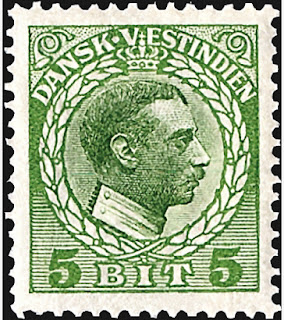So you are building up your stamp collection and eventually you get to the point where you need to seriously consider how you are going to organize and store it. Everyone does it differently. Some prefer pre-printed stamp albums, others stockbooks or (my choice) stock sheets in binders. Some forgo the book format altogether and use regular boxes. I even saw once on I think
The Stampboards Fourm a collector who purchased an old library card catalog cabinent and stored his collection in dealer cards stored in the boxes where the library card catalog records were kept - VERY CLEVER and it looked amazing.
My French colonies collection is reaching a point where I have several lighthouse
Vario-F and
Vario-G binders to house it. The Lighthouse binders are wonderful, but they of course have no information on the outside to tell you the contents. I could just write the name on a self-stick label but to me that isn't really all that attractive. Now you can purchase
labels from Lighthouse for certain nations, or even have custom album labels made by
Palo to say anything you want. But for me, that seemed like paying money for something I could just as easily do at home.
And after experimenting a bit, I discovered it is definitely something worth doing at home. All you need is an inkjet printer, some good label paper, and a good graphics program such as Photoshop to edit any graphics you might want to include on the label.
Growing up I always thought that albums which had the coat of arms of the nation whose stamps were in the album looked really classy, so I decided that is what I wanted to put on the spine of my binders. Just the coat of arms, not the name of the nation (being trained as historian means I know my coat of arms and flags of nations like the back of my hand). Since my collections are organized along modern nations, with colonial issues being the first part of many of those nations, I chose to use the coat of arms of the independent nations. For those remaining areas of the French empire *
ahem, Departments d'Outre Mer, s'il vous plait* I use their coat of arms as well.
The process is actually quite straight forward.
1) choose the kind of label paper you like. I am using
Silhouette brand printable silver foil. They make a gold foil as well as a transparent (more correctly translucent) printable paper as well. For me, the gold seems a bit too ostentatious, and the transparent made it difficult to see the coats of arms clearly, so silver was a nice compromise. And the pages are 8.5x11 inches and designed to work with inkjet printers that have the capability to print on photograph paper.
Silhouette brand printable silver foil. Restrained refinement perfect for this project.
2) Next I needed the designs of the various coats of arms. In
Wikipedia we trust. Coats of Arms are public domain items so downloading the images from the Wikipedia is not a problem.
3) Once you have the designs, a graphical editing program like Photoshop is necessary to make the images small enough to fit on the spine of the album. I am a huge fan of Photoshop but any good graphic editing program will do, and many of them are free/shareware. Once you reduce the images down to the right size, you can create a new image file and then, using copy and paste, create a whole page of images. I could fit twenty of them on an 8.5x11 page.
The balance of the first page of coat of arms labels I printed, having cut out a few already to place on binders. I can fit twenty coats of arms on a page total.
4) Once you have the graphics done I needed to save the file in a format that would keep the background transparent when printing so that the silver foil would come through. In photoshop that is easy enough just choose save as a .png file.
5) Then you start the printing. In your printing preferences, you need to see the print type to printing photos, paper type to glossy photo paper, and print quality high. Then just load a piece of the label paper in and hit print. Once done, LET THE PRINTED PAGE SIT SEVERAL HOURS TO DRY. This will help prevent smudging and "set" the designs.
6) Then once you let the labels dry, simply cut out and put onto the binder spine.
The first three binders with their new coat of arms labels. The black binder is for French Antilles (Guadeloupe, Martinique and Guiana coat of arms respectively top to bottom), the middle one is for Cameroun, and the one on the right for Gabon.
Easy peasy as Jamie Oliver would say and makes it much easier to find a specific country in my growing collection. And as I am still very much a worldwide collector and plan to focus on other parts of the world as my collecting evolves, I think this will be a nice look for my albums on the shelf.
The only thing I am not certain of, yet, is if over time the labels will be peelable, so that if I need to move a country's collection to a larger binder, I could easily peel the coat of arm label and reuse. The labels adhere well to the Lighthouse binders, and at least initially do seem peelable within the first couple days of being applied. Long-term though not sure that will remain the case. But given how relatively inexpensive making these labels are, its not a major problem, and one could recycle a binder by putting a new label over the old if needed.















